What if you could go hiking as a beginner, fully confident, even if you’re hiking with the entire family?
We all know that it can feel like a lot when you start looking at gear lists and trail guides. I mean, do you REALLY need to have all the expensive hiking shoes, pants, and water bladders?
Spoiler alert: Probably not.
They may make your hikes more enjoyable in the future, but we’re here to tell you that even without buying a bunch of gear, you probably have everything you need to get started on beginner hikes.
It’s true! Even though we’ve told some warning stories in other posts about having the right hiking gear, we also started with very simple gear – and you can too.
Not only is hiking a great workout, but it’s an incredible activity to do together. Hiking to a plunging waterfall or a stunning view is one of our favorite things to do as a family. No matter how many times we go, it never gets old cresting the top of a challenging hike to hear your kids utter, “Wow…that is an AMAZING view!” Truth be told, I never get tired of seeing sights like this either. 😍
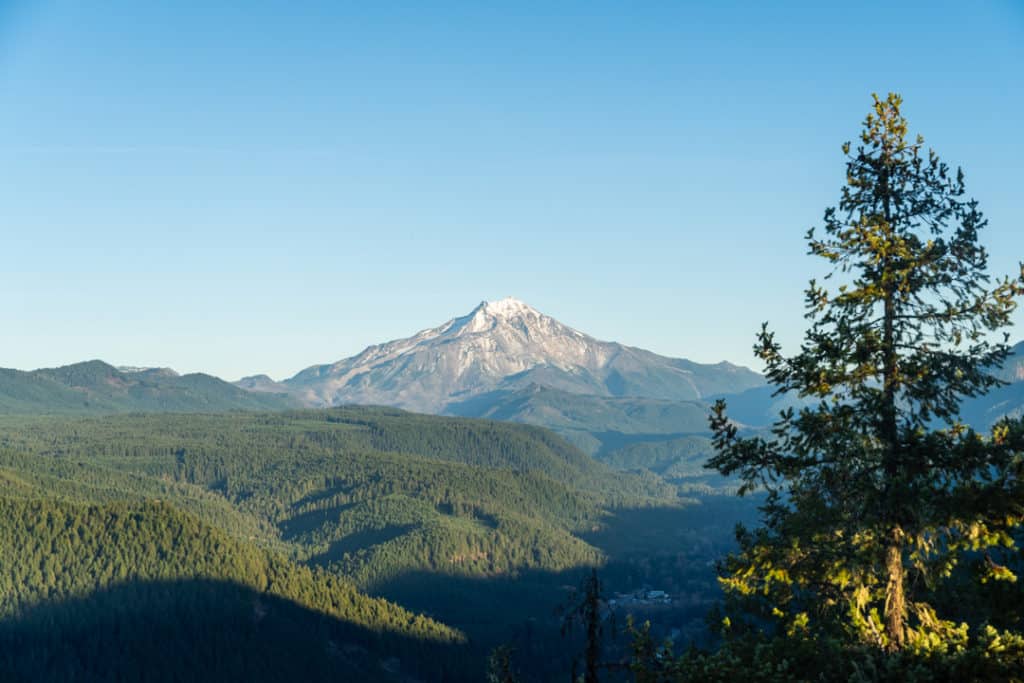
When it comes to going hiking for the first time, though, it’s easy to feel like there is so much you have to know:
- Which trail to choose
- What passes or permits you’ll need
- What you need to take
- What shoes to wear
- What about bears?!
And, So. Much. More.
But it’s okay. It’s not as complicated as it seems. We’re going to give you the essentials you need to hit the trail ready to go.
In this beginner’s hiking guide, we’re going to break down some of our best tips and advice to help you plan for a successful day on the trail – even if you’re taking the kids, and you misjudged the difficulty of the trail. 🤪
We’ll cover:
- What to do before your hike
- What to do during your hike
- What to do after your hike
- Frequently asked questions about getting started with hiking
Before Your Hike
Choose a Hiking Trail for Beginners
When you first start hiking, it can be tempting to try to hit a trail that looks amazing, just because you saw it over on Instagram. And, some of them might be great options, but you want to make sure that you do your homework first. Some of those picture-perfect hikes are actually a beast to get to and are probably not where you want to start off hiking. We like using an app like AllTrails, or a local hiking site, as a starting point to help us find the best choices.
When choosing your first few hikes, it’s a good idea to take a few things into consideration:
Distance
When it comes to distance, when starting out, we recommend you choose a hike that is relatively short. One to three miles is an excellent place to start, especially if you’re hiking with young kids.
Estimated Time
When you’re searching for a hike, some apps and websites will give you an idea of how long the trail takes the average person to complete. If you know you are very fit, you can probably estimate a slightly shorter time. While if you know you will need to take it slower due to kids, a bad knee, or just stopping to take a million photos like us, you may want to give yourself a little extra time.
If you can’t find an estimated time, a good rule of thumb is approximately 30 minutes per mile for relatively easy trails.
Elevation
Speaking of moderate difficulty, when you are looking for a hike in an app like AllTrails, you’ll usually see a rating of Easy, Moderate, or Difficult. Sometimes that difficulty can be due to distance, and sometimes it’s due to elevation.
We’ve done hikes that were rated as difficult, but were only 2-3 miles round trip because they had significant elevation gain. We’ve also hiked long trails that were rated as difficult solely because they were long.
Fitness Ability
If you and your hiking partners are in great shape, you may be able to do a longer hike your first few times out. However, if regular exercise hasn’t been part of your routine, start slow! It’s always easier to convince yourself (and your kids) to go hiking again if you didn’t torture yourselves the first time around. 😉
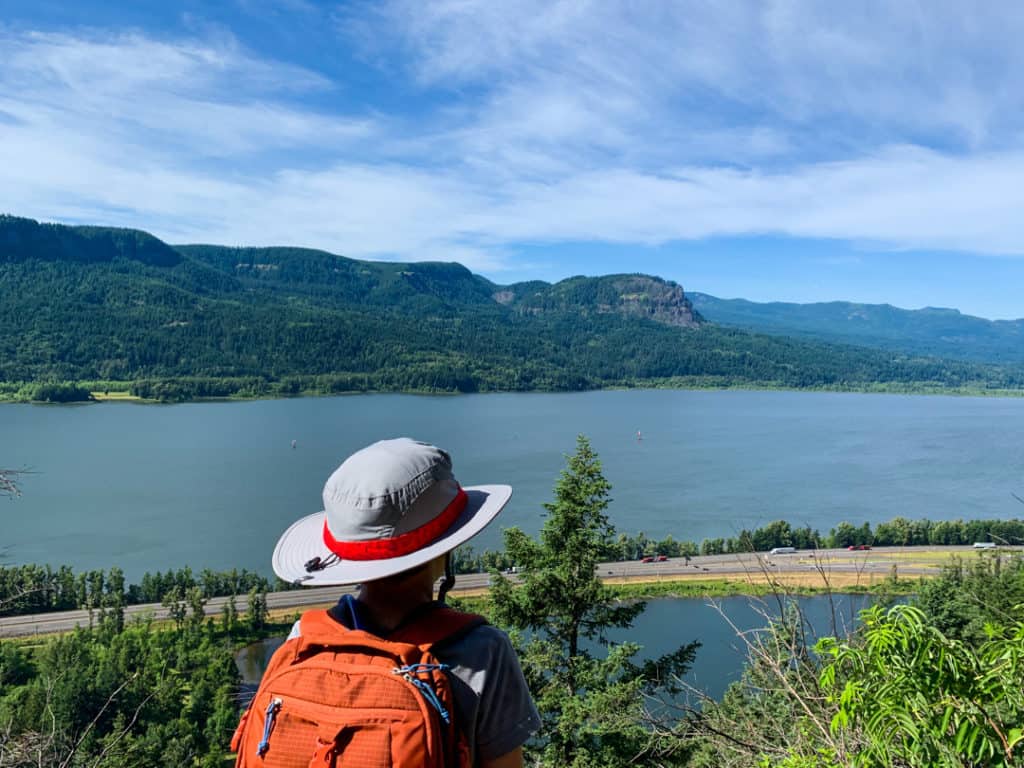
Find a Hiking Buddy
If you’re hiking with your family, good news! You’ve got your hiking buddies built-in already. If not, it’s a good idea to grab a friend who can head to the trail with you. If something happens to go wrong, having another person with you can be a huge help.
Fall down on the trail and twist your ankle? Your buddy may be able to support you on the way out or head out to grab signal and help. If your phone dies (thereby losing your navigation), hopefully, your friend’s phone is still charged (or you have a way to charge your phone without electricity). If you realized you brought way less water than you should have, a friend might have brought enough to help you out.
All that said, it doesn’t mean you should rely on your friends or family to get you out of sticky situations. Instead, just that some mistakes when you’re first getting started are bound to happen. And hiking with a friend is more likely to make those mistakes less dangerous. Plus, it’s more fun to go with company.
Gather Your Hiking Gear (10 Essentials)
When it comes to hiking gear, it can seem like a lot when you look at everything you’re supposed to have. Seriously, even if you read our post about what you need to take hiking, you might get overwhelmed if you’ve never been before.
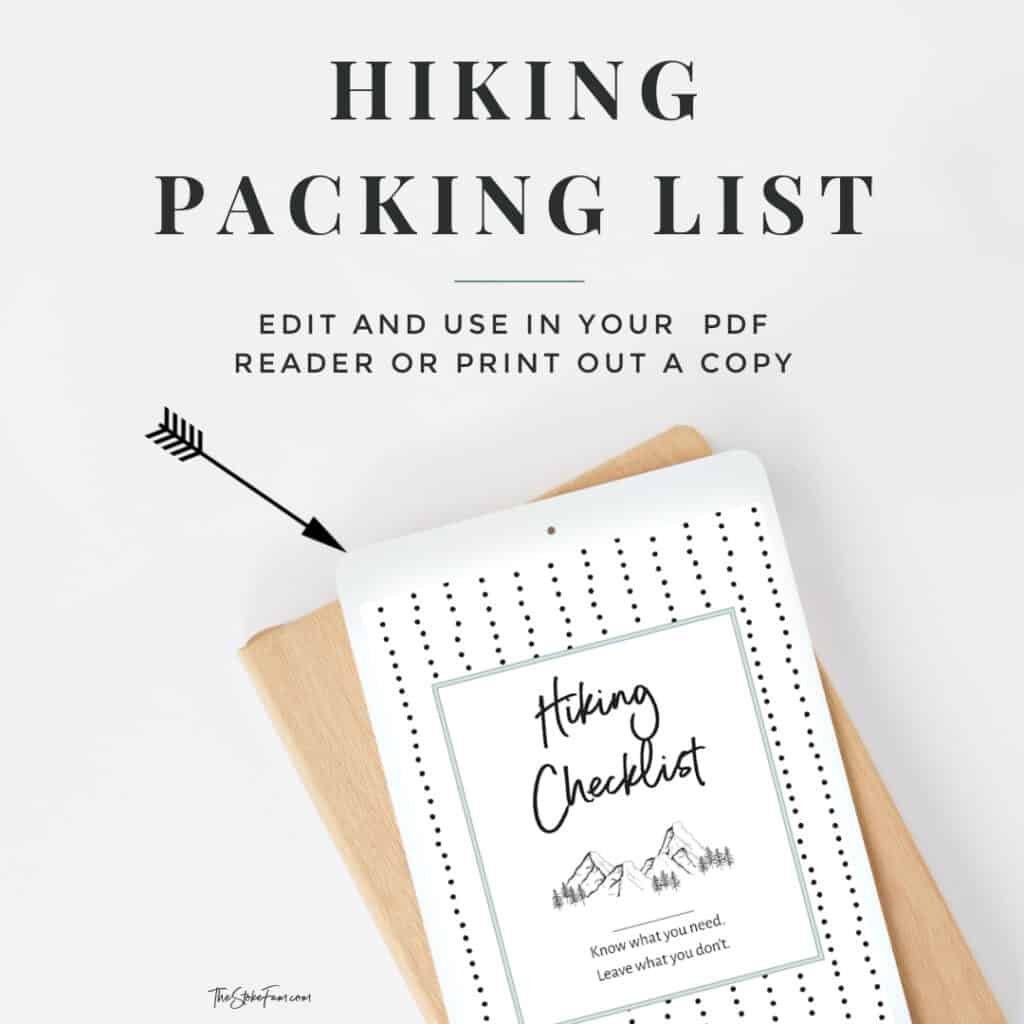
But, let’s break down the necessities. You should always carry The Ten Essentials, which we’ve listed below. However, that doesn’t mean that you necessarily have to buy the fanciest item for each of them. In fact, you probably have everything you already need at home.
- Navigation: Have a phone with AllTrails or Gaia? You’ve got this covered. Just make sure to be fully charged and/or carry a charger.
- Sun Protection: You probably already have sunscreen, a hat, and/or sunglasses. Pack what you have, and you’re good. If you’re trying to keep your pack lightweight, you can take a travel size sunscreen or put some in a smaller container to save on weight.
- Insulation/Warmth: If you have a fleece, down jacket, and/or base layer, you’ve got this covered. Pack what you have, toss in a rain jacket in case it rains, and call it good!
- Lighting/Illumination: If you have a headlamp, that’s great, but if you don’t, a regular flashlight will do. Grab an extra set of batteries, just in case, and you’re good to go on lighting.
- First Aid Items: For this one, it might be easier to pick up a small hiker first aid kit that is already done as they are relatively inexpensive, but you don’t have to. You can certainly gather everything you need for your first aid kit, and as you start doing longer hikes, expand it was needed. However, for a short day hike, you probably have a lot of what you need already. Grab some assorted bandages, gauze, tape, antiseptic towelettes, triple antibiotic ointment, moleskin or blister patches, tweezers, and some basic meds like pain relievers and allergy meds. For a full list of recommended items, we have a more extensive printable list of things to bring hiking. Grab a copy here.
- Fire Source: This can totally be a lighter or matches that you already have at home. Waterproof matches are ideal, but you can also toss regular matches in a plastic baggie to keep them dry if you need to. Just be aware of fire restrictions and consider purchasing a stove for cooking when fires are not allowed.
- Tools/Repair Kit: You can start with duct tape and a knife and beef up your kit as you can. If you have some twine or paracord, it could be useful to add that as well.
- Food and Nutrition: Just think snacks and food ideas that are going to pack a lot of energy in a small punch. Granola bars, dried fruit, trail mix, and nuts are great for this. But you can always pack sandwiches too. Easy, peasy. Just toss in more food than you think you’ll need for the duration of your hike. Enough extra calories in case you were stuck overnight is a good starting point.
- Water and Hydration: Bring more water than you think you’ll need, but you don’t necessarily have to buy anything extra. Something like a large Nalgene water bottle if you already have it will work great. As long as it’s got large enough capacity and isn’t breakable, you can use it. You can always upgrade to a hydration bladder and filter later, when you’re ready.
- Basic Shelter: If you have an emergency blanket or bivy, that’s perfect. But, if you don’t have one, a small tarp and some twine can totally suffice as well.
As far as clothing, ideally, you want to wear something other than cotton. What you wear hiking can make a big difference in your comfort and safety on the trail. If you don’t have hiking gear or wool layers, think about workout clothing. It’s typically designed to wick moisture away from you as well and works well on the trail. If cotton is all you have, don’t let it stop you from going, but do plan carefully for the weather and make sure you have a full change of clothes.
Plan the Logistics of Your Hike
One thing that is easy to overlook when you’re planning your first few hikes is logistics. You’ll want to think through a few things before you head out. What time of day are you planning to hike, and how far will you have to drive?
For instance, you’ll want to think through what time you should start hiking so you can be sure to get back to your car before dark. Night hikes can be a lot of fun, but your first few hikes probably aren’t the best time to try them out. 🤪
A couple of other questions to consider: Is there a parking area nearby? If the parking area is full, do you have a backup plan? Knowing what you’ll do if things don’t go according to plan helps to keep your day from being ruined if Plan A doesn’t work out.
Learn the Basics of Hiking Navigation
When it comes to the basics of navigation during a hike, it can seem really overwhelming, but on most well-marked, regularly trafficked trails, it’s not bad. Promise!
Before you head out, these are the bare essentials we suggest you know. Know how to figure out which direction you’re pointing in regards to the map, whether you’re using an app or a paper map and compass. Know what the topography lines indicate (hint: it has to do with how steep the trail is) and how to measure distance on the map.
Truth be told, we actually suggest that you use an app on your phone first as the GPS will tell you where you are in relation to the trail and can be much easier than trying to figure it out from a paper map to begin with. It’s a great idea to learn to read a paper map and use a compass, but for easy trails, an app is less intimidating to start.
In addition, some hiking apps will also work in airplane mode as well, saving valuable power. You may have to upgrade to premium for offline use, but we find it’s worth every penny. So far, our top pick for navigating on trail is Gaia.
Break-in Your Shoes Before You Hit the Trail
If you’ve just bought yourself a brand-new pair of stiff hiking boots, do NOT wear them for the very first time on a 5-mile hike. Ask me how I know. 😬 Let’s just suffice it to say blisters are not fun. At all.
Wear them around the house, wear them on neighborhood walks, head to the local park for a longer stroll in them, but give them some time before you head out in them. Your feet will thank you. I promise.
Tell Someone About Your Hiking Plans
Before you head out on a hike, especially one where you know there will not be cell service, it’s a good idea to tell someone where you’re headed and when you expect to be back. Then, if you aren’t back as planned, your contact can reach out for help.
During Your Hike
Follow Trail Etiquette
When you’re new to hiking, you may encounter situations where you aren’t sure exactly what to do. This blog post on hiking etiquette goes into much more detail, but a few essential items to keep in mind are these.
- Step to the side to allow hikers who are faster than you to pass on the left.
- When you encounter another hiker coming towards you on the trail, whoever is going uphill has the right of way unless they choose to take a break.
- Horses have the right of way on shared trails.
- Mountain bikers technically are supposed to yield to hikers. However, we tend to give them space. They are bigger and faster than us. 😉
- Make sure to carry out your trash, properly dispose of any human or pet waste (or carry it out), and follow the rest of the Leave No Trace principles.
- Be friendly!
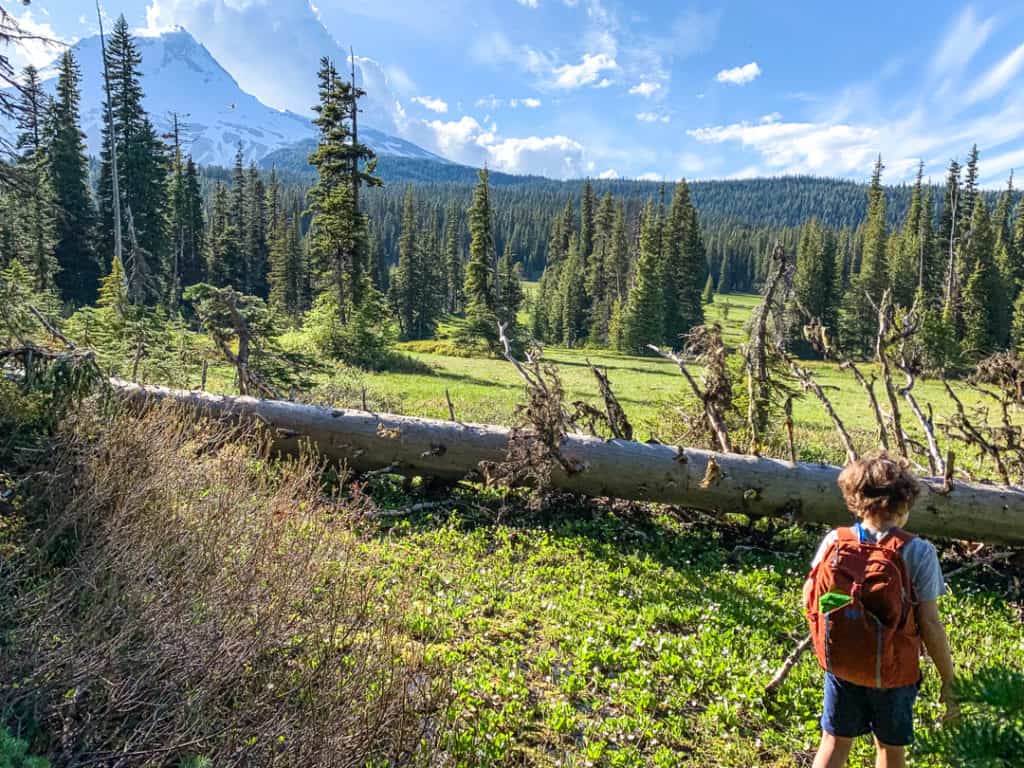
Be Aware of Wildlife
Before you head out, it’s a good idea to know what kinds of wildlife you may come across and know how to be prepared. It’s always a good idea to give wild animals their space if you do come across them. And, if you’re hiking in bear country, bear spray is a great idea.
Drink Plenty of Water
Especially during the summer, people often don’t drink enough during hiking. Myself included. So, I think this is a great reminder for everyone.
On a recent hike, I didn’t realize how little I had drunk until I realized that over 4 miles (and about 2 hours in), I didn’t need to pee. That’s not normal for me during a hike. But, the day was hot, and I think I was sweating more than I realized. As a baseline, for an adult, you should drink about a half liter per hour. But, if it’s hot or especially strenuous, you’ll likely need more. In other words, always bring more water than you need, and try to drink plenty while you’re hiking.
Don’t Forget to Eat Those Trail Snacks
The same thing goes for snacks. If you feel yourself starting to wear down a bit (or if the kids are getting cranky), it’s probably the perfect time to take a break and eat.
Our youngest has started to realize when he’s having a meltdown “because I needed a snack” on the trail…though, it’s usually after the fact. 😬 But, the more he practices, the better he’ll get at recognizing those signs earlier on. We hope.
Choose a Comfortable Pace
I have to admit, I’m sometimes the one urging everyone to pick up the pace. But, the truth is, there’s no reward for finishing a hike the fastest. The reward is in enjoying it – the views, the conversation, and just being in nature. So, take your time. 😊
There’s No Penalty for Turning Back
Just like there’s no award for finishing fast, there’s also no penalty for needing to turn back. If you’re only half-way into an out-and-back trail and you realize that everyone is already struggling, it may be smarter to call it and turn back. You can always try again after everyone has a little more practice.
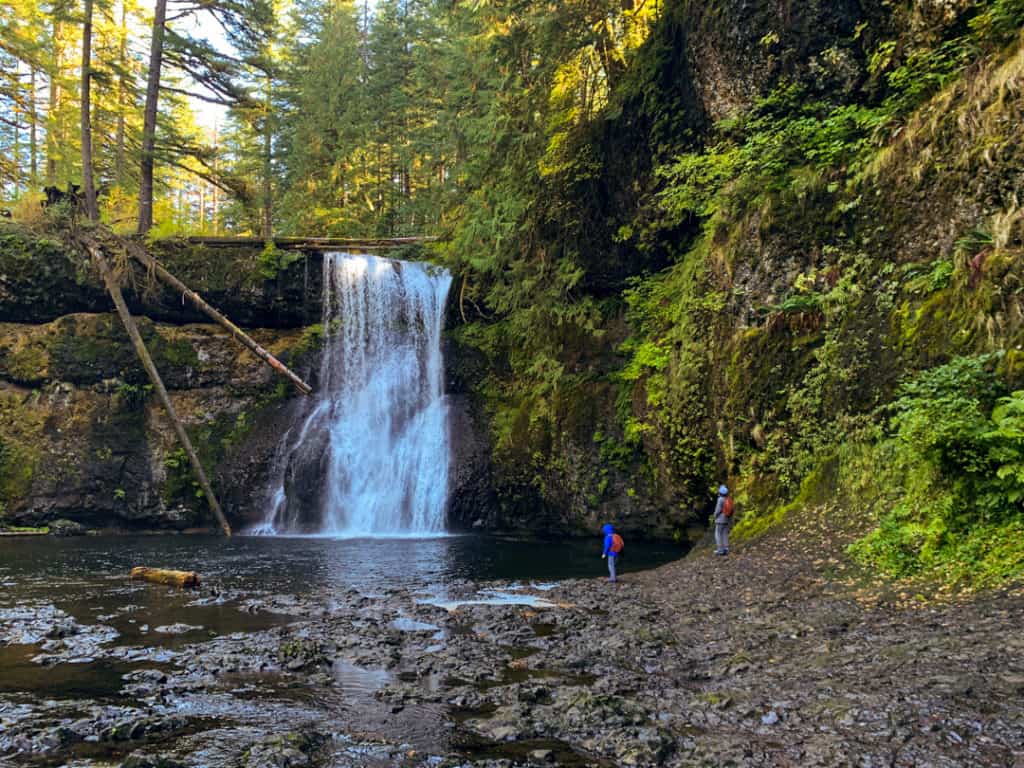
What to Do After Your Hike
Stretch
One of the best things you can do after you hike, whether you’re a beginner or not, is to take a few minutes to stretch before you hop back into the car. We find it helps a TON with sore muscles, especially if you have a long car ride on the way home.
Notify Your Person
Remember that person you told you were heading out on a hike? Once you’re back to signal, make sure you text or call them to let them know how awesome your hike was and that you’re back safely. We always try to give them a huge thank you for looking out for us as well, and we are always glad to return the favor.
Eat and Continue to Hydrate
Once you’re done, give your body some fuel to say thank you! A lot of times, we will decide to pick up takeout or stop at a restaurant after a hike as a special treat, especially if the kids rocked it.
Check for Ticks
In our area, ticks aren’t super common (thank goodness!), but we still check for them anyway. After growing up in the south, I just learned it’s part of what you do after being in the woods. Double-check your hair, behind your ears, underarms, and behind knees, in particular. They’re sneaky little guys that like to hide… 🤢
Start Planning Your Next Hike
After you’ve completed your hike and you know what went well and what didn’t, what you loved and what you hated, you can decide where to take your next hike with those things in mind.
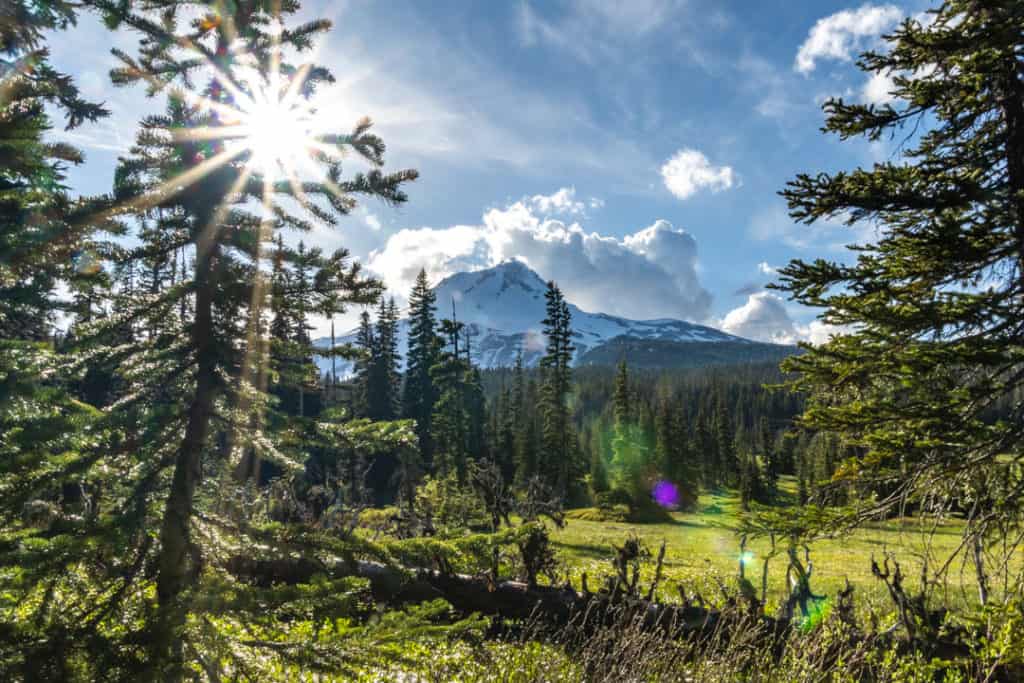
Frequently Asked Questions
What shoes should I use for hiking?
There are several schools of thought on this, and everyone has their reasons. What I’m going to share is just our opinion, of course, but after many miles of hiking, here are our thoughts.
In most cases, we prefer a trail runner or trail shoe over a true hiking boot for most day hikes. They are more comfortable, lighter, and are less likely to cause blisters. John and I recently got Altra Lone Peaks and are in LOVE! My feet have never been so happy on a hike.
True hiking boots are great in that they can give more ankle support and stability when you’re hiking on more technical terrain. They also may last longer because the materials can be more durable. But, they can also be stiffer. Which means less comfort….so, there’s that. I think my next compromise for trails where I want a higher boot will be an additional pair of the Altra Lone Peaks in the mid version.
We have also hiked in Chacos, which are a type of sandal that is great for hiking. I like these for short hikes where our destination is at a water source. They aren’t my favorite for longer hikes, however.
A pair of tennis shoes (or running shoes) can also work for hiking. However, keep in mind that they will not have as much traction as hiking boots or trail runners.
Are hiking sticks (hiking poles) useful?
Totally! Especially on a hike where you may have to do a river crossing or the terrain is steep. You can look for a good stick from the woods to use or buy a set of trekking poles. Here are some options to check out on Amazon.
Is hiking a good workout?
I usually track our hikes with my Apple Watch, and I typically burn between 400-500 calories per hour when we are hiking a moderate trail. I’d definitely call that a great workout!
What hiking gear do I really need?
As long as you have the Ten Essentials, good shoes for hiking, and moisture-wicking clothing, you’ve got the basics covered. But, here’s a full list of everything you need for hiking for more details.
What about hiking where there are bears?
I’m probably gonna jinx myself, but I’ve never seen one when hiking. 😬 Even though we hike in areas where they live all the time. So, even though it seems like it could be super risky, chances are it will be a long time before you actually encounter one. Unless you live somewhere like Montana or Alaska, it’s not as common as you would think.
Stay aware, hike with bear spray, and give them plenty of room if you do encounter one. If you want to know more details about what to do if you encounter a bear, check out this post from the National Park Service.
Update: I was right. We finally saw a bear on a hike in Grand Tetons. But he was way more interested in berries than us. 😉
Why is hiking good for you?
Hiking is good for you because, aside from the fact that it’s an excellent workout for you, it takes place in nature, which is amazing all on its own. It’s a huge stress reliever, a great way to bond with friends and family, and is a great way to reset from the crazy pace of life.
Is hiking with kids a good idea?
You read our intro, right?! 🤪 Just kidding. It’s a great idea!
We’ve been hiking with our kids since they were babies. We started hiking with them in baby wraps when they were tiny, then kid carrier backpacks, and then bringing the kid backpack as a backup for the toddlers who determinedly said, “Down, down! I walk!” Only to decide they needed “Up, up” after about 10 minutes. 🙄
Over time, they have increased the distance they can walk, and now they can do long, easy hikes up to 10 miles long or more challenging trails as long as we keep them shorter.
Can you go hiking with dogs?
This is a great question. In our experience, most dogs love to hike, and we have always taken ours when we can. Now that our dog is almost 13, she doesn’t go as often, but when we’re heading on an easy hike, she loves to come along.
There are a few things to consider, however, when hiking with dogs. Make sure you bring plenty of water for them as well, especially on a hot day. And, if it’s especially hot, leave them home, particularly if they have a super heavy coat or are a brachycephalic breed like Pugs, Boston Terriers, or Frenchies.
How do I use the bathroom during a hike?
If you need to urinate, find a private spot. Take a peek around to make sure that there aren’t nests or things like poison ivy. It’s also the best practice to be 200 feet from a water source. If you’re female, you can also pick up a pee funnel to use instead of squatting. You may also want to carry something like a Kula cloth with you.
If you need to poop, it’s a good idea to double-check the area that you’re in. However, in most cases, it’s okay to dig a hole at least 6 inches deep to do your business. Cover it up, place used toilet paper in a baggie and carry it out. It’s handy to carry a trowel, a baggie, toilet paper, and some sanitizer with you during a hike, just in case.
Can I go hiking in jeans?
Well, technically, you can. However, you will have a much more enjoyable time in pants or shorts that are somewhat flexible and breathable. If jeans get wet, they are much heavier, and they won’t dry out quickly. In winter, that could be disastrous, and in summer, it could be incredibly uncomfortable.
How long does it take to hike a mile?
In general, for us hiking with kids, we give ourselves about 30 minutes to hike one mile. Sometimes it takes a little less, sometimes a little more, but that’s typically pretty average unless the terrain is steep or difficult, and we have to take more breaks.
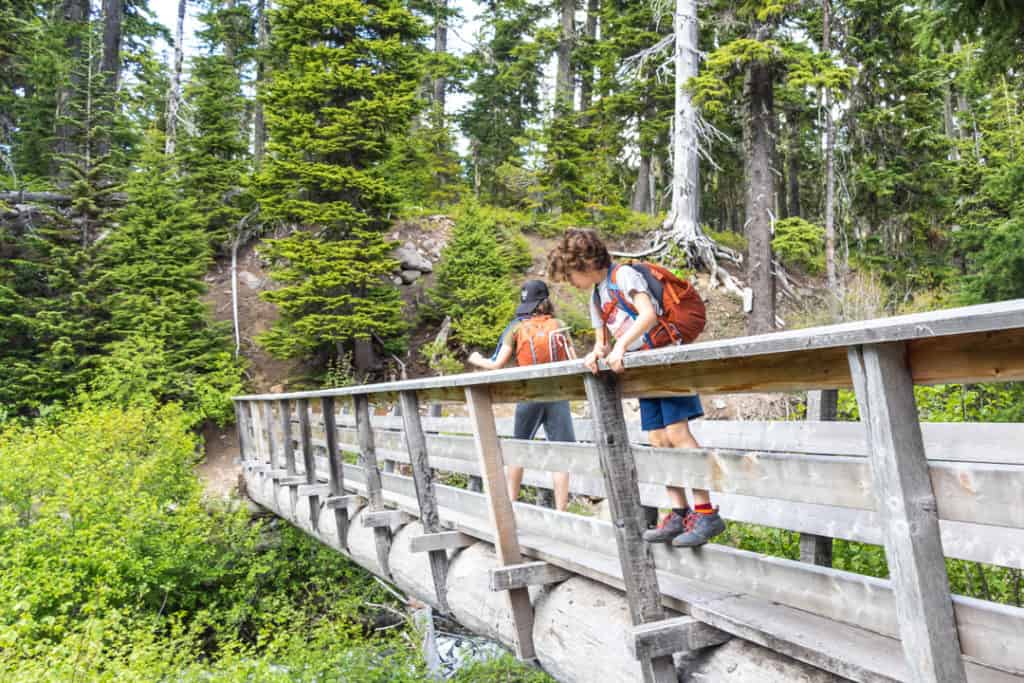
Final Thoughts on Hiking for Beginners
When it comes to going hiking as beginners, it’s totally possible to get out there confident and ready to hit the trail. With a little planning and preparation, you’ve got this!
Want to make sure you don’t forget any of the things you learned? Grab yourself a printable version of this post here.
Now, it’s your turn — where do you plan to go on your first (or next) hike?? Let us know in the comments!


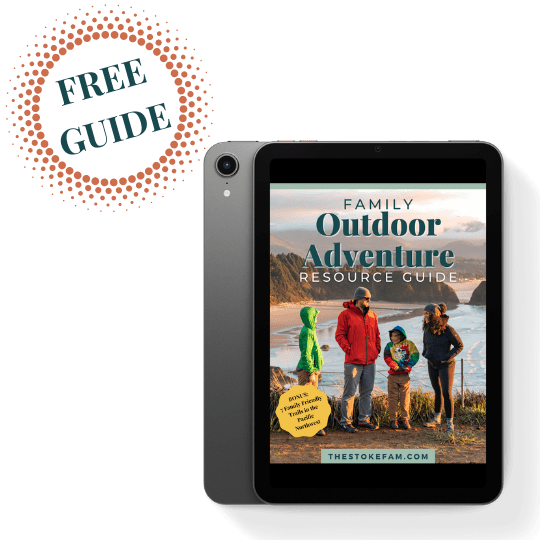
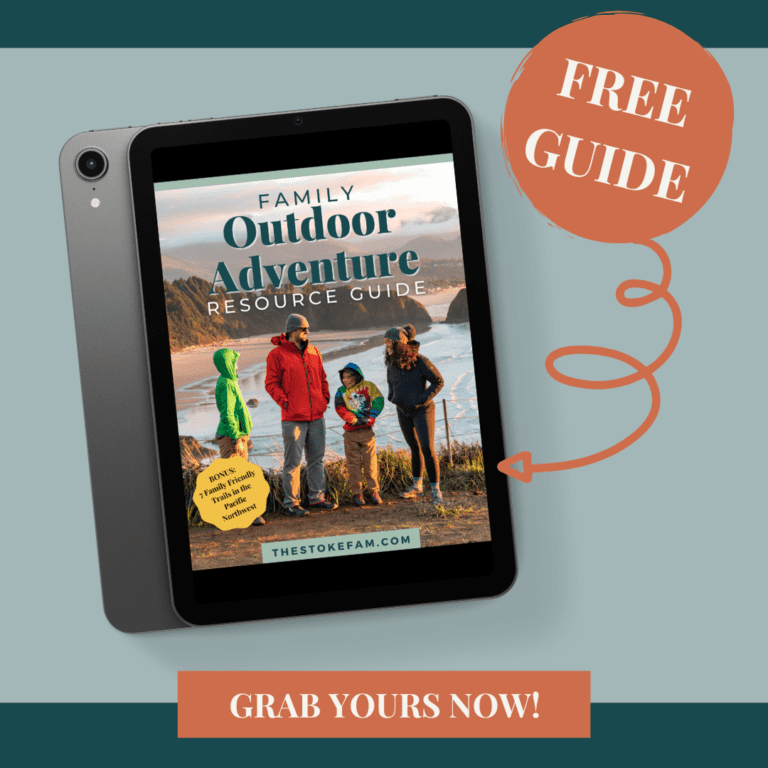
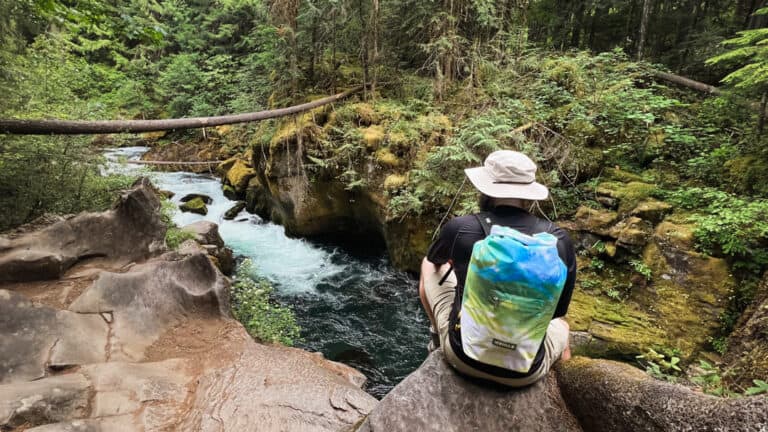
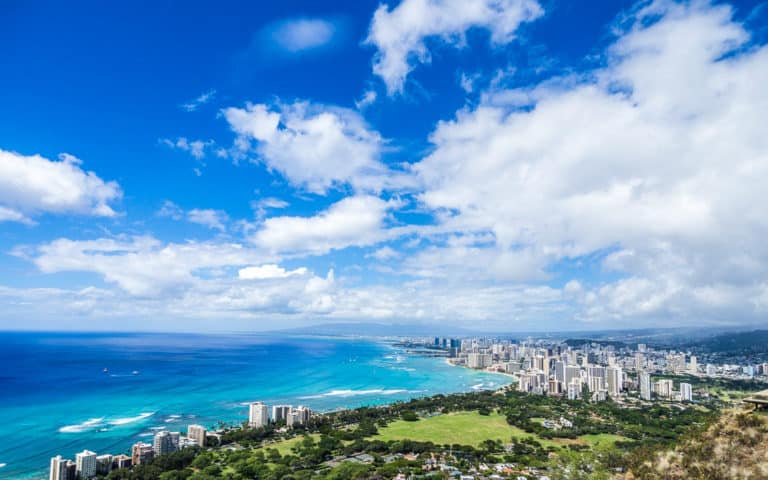
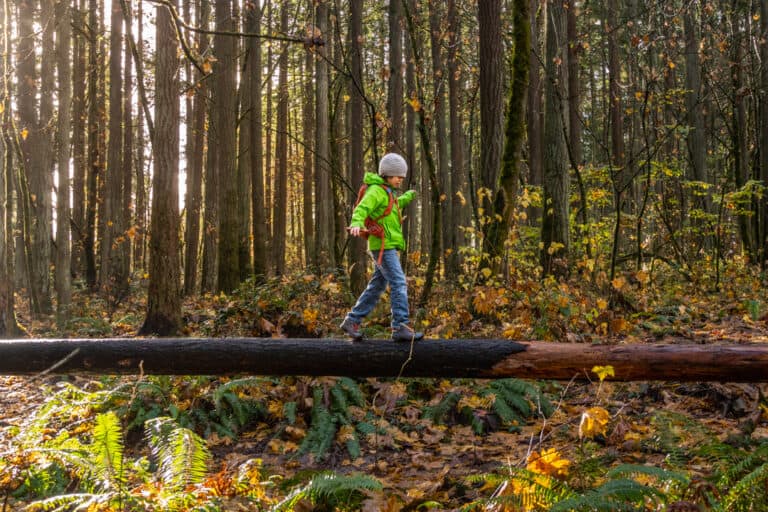
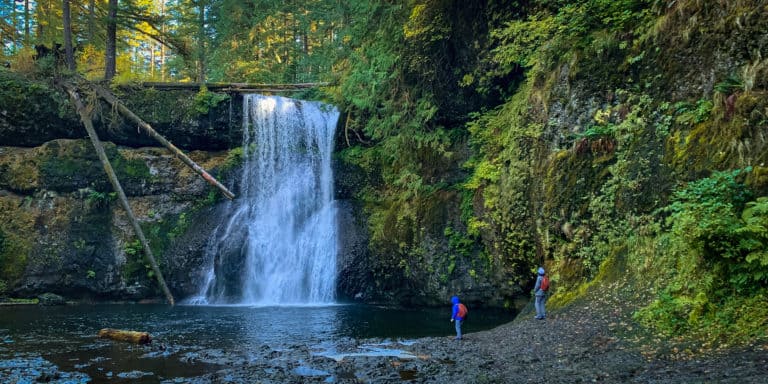
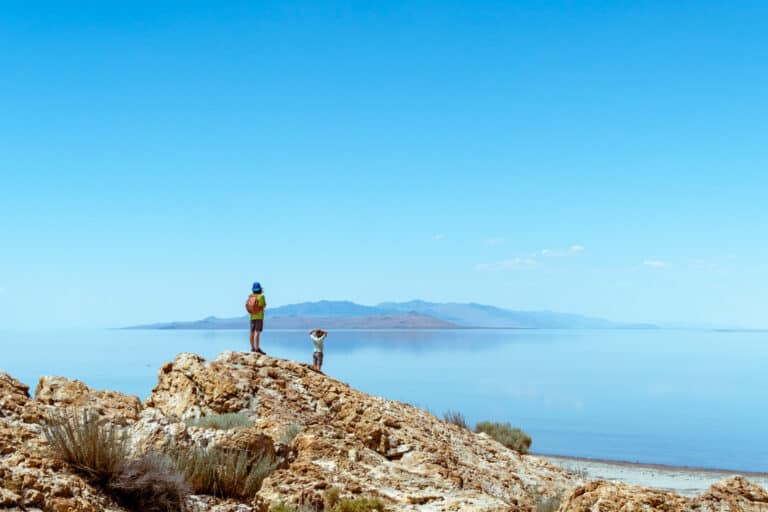
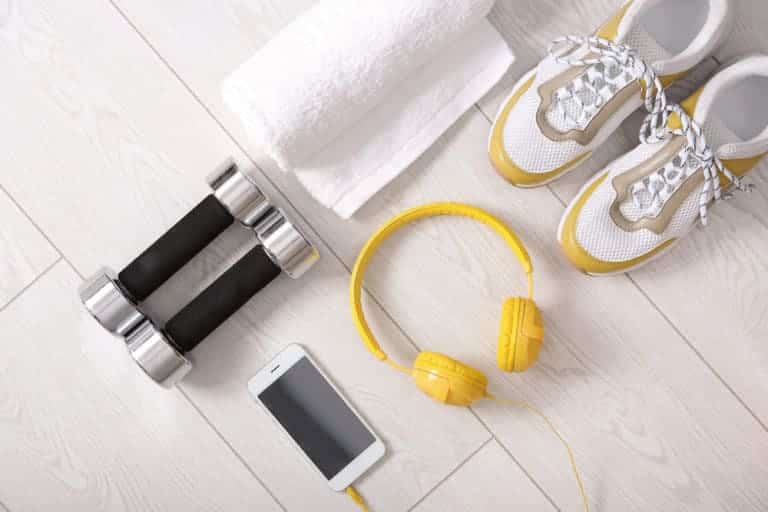
Brilliant points! I got some hiking boots for xmas so should get into this more!
You totally should! Let us know how your next hike goes!
Check for ticks?! 🤭 I read this post because I moved to L.A. where there is a lot of great hiking but haven’t tried it yet. Someone started a hiking club in my community; we live right near an access point for the trail to the Hollywood sign, so I figured this was my opportunity. I bought a pair of hiking boots because the shoes I saw were actually a little bit more expensive so I figured the boots would provide better protection. My main fear is of wildlife; there are bobcats, coyotes, and my biggest concern, rattlesnakes that I wondered how to stay safe from on a hike, but having to check for ticks is making me think that this may not be the activity for me. 🙁 I will pin this just in case, though.
You’ve got this! I’m not sure how prevalent ticks are in that area, but it’s just a good idea to make sure that you don’t have surprises later…you can use a bug spray that targets ticks as well as mosquitos and it really helps! That’s typically what we do.
As far as wildlife, most of them are more scared of you than you are of them. 😉 We don’t really have any poisonous snakes where we are, but we did when we lived in North Carolina and if we go to the eastern part of Oregon. When we are hiking, we just watch where we put our feet and pay attention in rocky areas. We’ve seen snakes before, but they usually slither off before we get anywhere close. And, we always carry bear spray just in case of bears (or even large cats, if necessary). Hiking with a friend or in a group is also a huge deterrent for animals.
I know it sounds scary (I love the outdoors, but I also love me a comfy bed and a good spa day like no other 😉), but the rewards are definitely worth it! I’d love to hear how it goes if you give it a try!
I have just started hiking this year. Your post is a great one. Thanks for the tips
So exciting! Where has your favorite hike been so far?